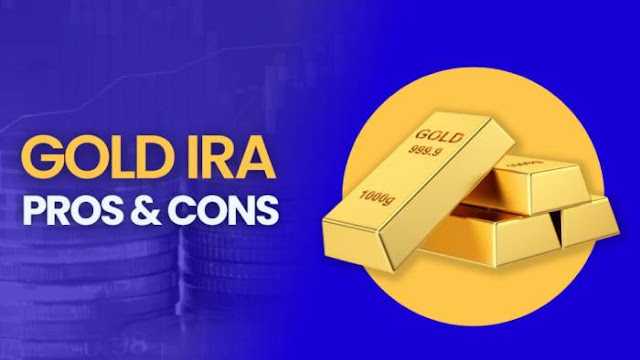Gold Backed IRA Pros and Cons


Introduction:

The investigation into PPP (Paycheck Protection Program) Loans represents a critical endeavor to examine the implementation and impact of this significant economic relief initiative. The PPP program, launched in response to the COVID-19 pandemic, aimed to provide financial assistance to businesses struggling to maintain their operations and workforce during unprecedented economic disruption. This investigation sheds light on various aspects of the PPP program, ensuring transparency, accountability, and an understanding of its effectiveness. @ Read More: antioxidantllife
The PPP Loans Investigation List is a comprehensive roadmap
that guides the inquiry into the PPP program. This outline is the
foundation for a thorough and impartial examination of the program's
administration, its impact on businesses and the economy, and potential issues
such as fraud, compliance, and equity. Through a systematic and data-driven
approach, this investigation will contribute to a better understanding of the
program's successes and challenges, with the ultimate goal of informing future
relief efforts and policies.
II. Background Information:
A. Overview of the PPP Program:
Provide a brief overview of the PPP program, emphasizing its
inception and purpose.
Highlight the key objectives, such as maintaining
employment, supporting small businesses, and preventing economic collapse
during the COVID-19 pandemic.
B. Initial Goals and Objectives:
Discuss the initial goals set for the PPP program when it
was launched, including the expected outcomes and intended beneficiaries.
Mention any legislative or regulatory frameworks that
underpinned the program's establishment.
C. PPP Loan Disbursement Process: @ Read More: technoologylimited
Explain the process by which PPP loans were disbursed to
businesses, including the role of lending institutions and the Small Business
Administration (SBA).
Outline the application process, eligibility criteria, and
loan forgiveness provisions.
D. Key Stakeholders Involved:
Identify the key stakeholders in the PPP program, such as
the U.S. Department of the Treasury, the Small Business Administration, lending
institutions (banks and credit unions), and business applicants.
Highlight the responsibilities and roles of these
stakeholders in implementing and overseeing the program.
E. Legislative and Policy Changes:
Mention any significant legislative or policy changes that
occurred during the PPP program's existence, including amendments or updates to
program guidelines.
Explain how these changes affected the program's
administration and impact.
F. Public Response and Controversies:
Summarize the public response to the PPP program, including
its reception among businesses, advocacy groups, and lawmakers.
Highlight any controversies, criticisms, or concerns raised
by the public or media regarding the program.
G. Funding and Budget Allocation:
Provide information on the total budget allocated to the PPP
program and the disbursement of funds to eligible businesses.
Include data on the distribution of funds among different
business sizes and industries.
H. Previous Investigations and Audits:
Mention any prior investigations, audits, or reports related
to the PPP program, if applicable.
Describe the findings or recommendations from these previous
examinations.
I. Program Duration and Closure:
Specify the timeframe during which the PPP program was
active, from its launch date to its closure or expiration.
Note any extensions or subsequent programs that followed the
initial PPP program.
J. Purpose of the Investigation:
Reiterate the objectives and goals of this specific investigation
into PPP loans.
Emphasize the importance of conducting a comprehensive
analysis to assess the program's effectiveness, identify areas of concern, and
promote transparency and accountability in government relief efforts.
B. Initial Goals and Objectives:
When the Paycheck Protection Program (PPP) was initially
conceived and implemented, it was driven by several key goals and objectives:
Maintaining Employment: The primary goal of PPP was to help
businesses keep their employees on the payroll during the economic downturn
caused by the COVID-19 pandemic. By providing forgivable loans, the program
aimed to prevent mass layoffs and furloughs, thereby supporting workers and
their families.
Assisting Small Businesses: PPP was designed to provide
financial relief to small businesses, including sole proprietors, independent
contractors, and self-employed individuals. These businesses often lack the
financial resilience to weather economic crises without assistance.
Preventing Economic Collapse: The program sought to
stabilize the overall economy by ensuring that businesses remained operational
and financially viable. By preventing business closures, PPP aimed to mitigate
the risk of a broader economic collapse
Economic Stimulus: PPP was expected to inject liquidity into
the economy by disbursing funds to businesses for payroll and essential
operating expenses. This infusion of capital was intended to stimulate economic
activity, maintain demand for goods and services, and support economic
recovery.
Minimizing Unemployment: One of the secondary objectives was
to reduce the unemployment rate by encouraging businesses to retain and rehire
employees. This was seen as crucial for both economic recovery and social
stability.
Supporting Vulnerable Industries: The program recognized
that certain industries, such as hospitality, travel, and retail, were
disproportionately affected by the pandemic. PPP aimed to provide targeted
support to these industries to prevent widespread business closures.
Ensuring Quick Relief: Speed was a critical aspect of PPP's
design. The program aimed to provide rapid financial relief to businesses
facing immediate financial hardships due to the pandemic. This was reflected in
the streamlined application process and fast disbursement of funds.
Sustaining the Supply Chain: PPP acknowledged the
interconnectedness of supply chains and aimed to prevent disruptions by
supporting both suppliers and buyers within these chains
Promoting Economic Confidence: By demonstrating government
support for businesses, PPP aimed to boost confidence among consumers,
investors, and entrepreneurs, potentially spurring economic activity beyond the
program's immediate impact.
Mitigating Long-Term Damage: The program aimed to prevent
long-lasting damage to businesses, such as bankruptcies and permanent closures,
which could have repercussions for years to come.
These initial goals and objectives formed the foundation of
the PPP program, guiding its implementation and subsequent evaluations.
Investigating how well the program met these goals and whether it encountered
challenges or discrepancies in achieving them is a crucial aspect of assessing
its overall effectiveness and impact.